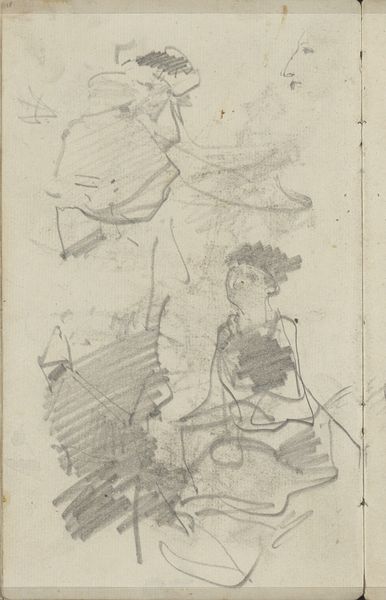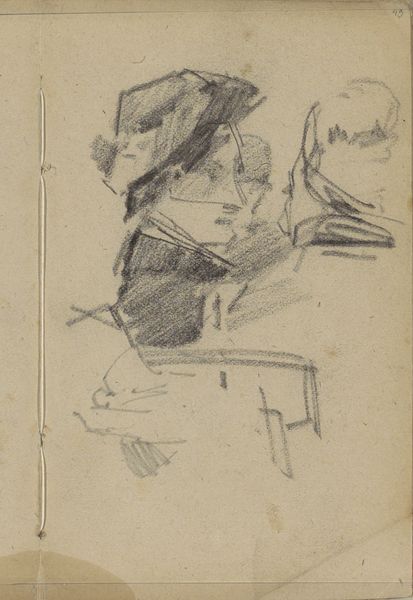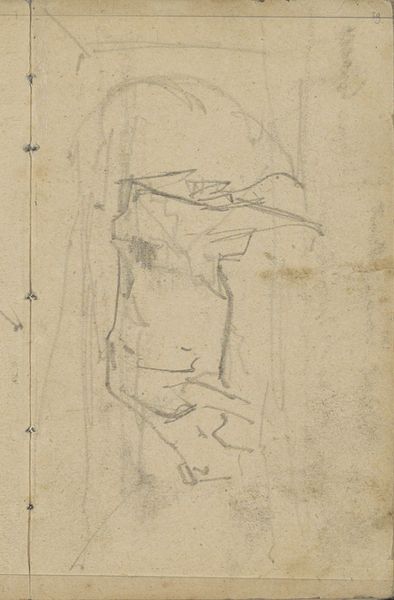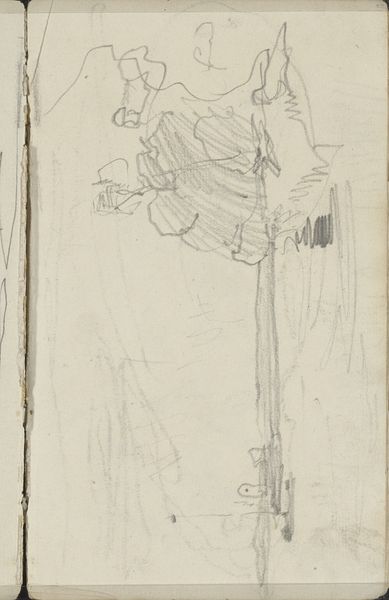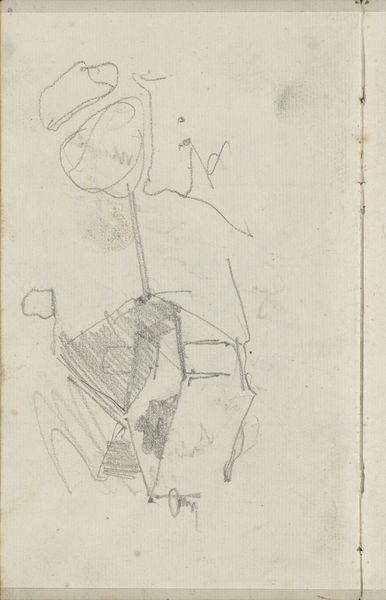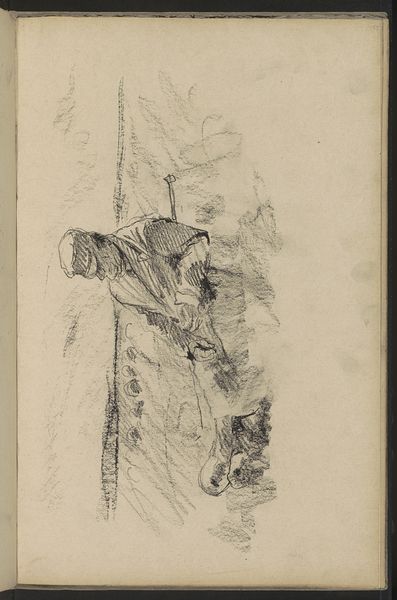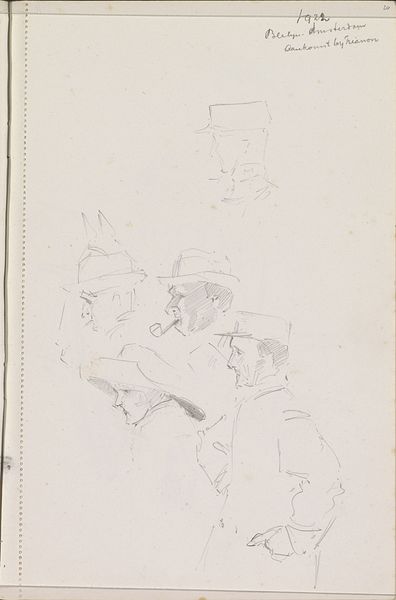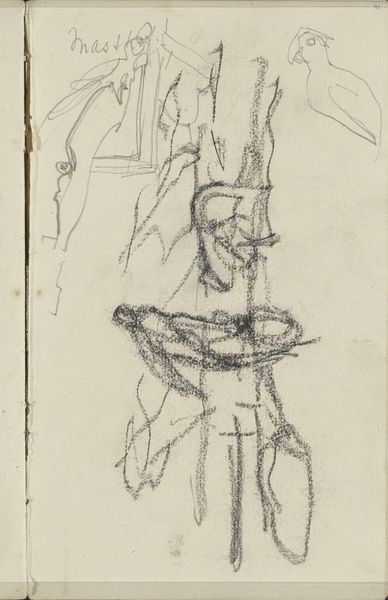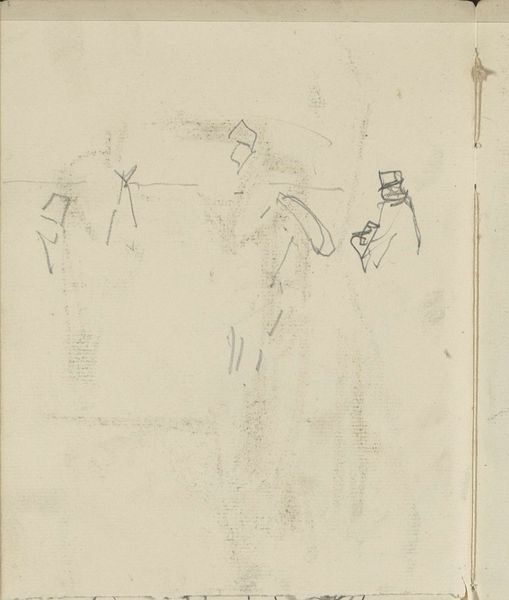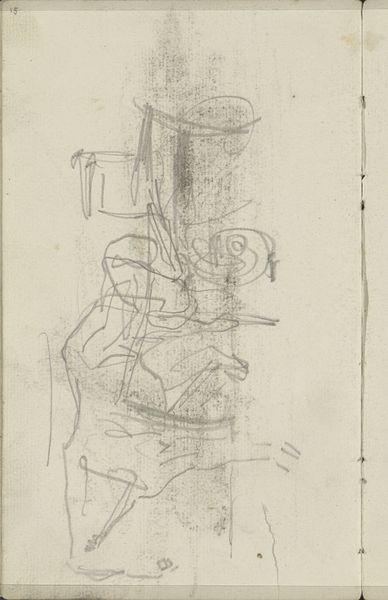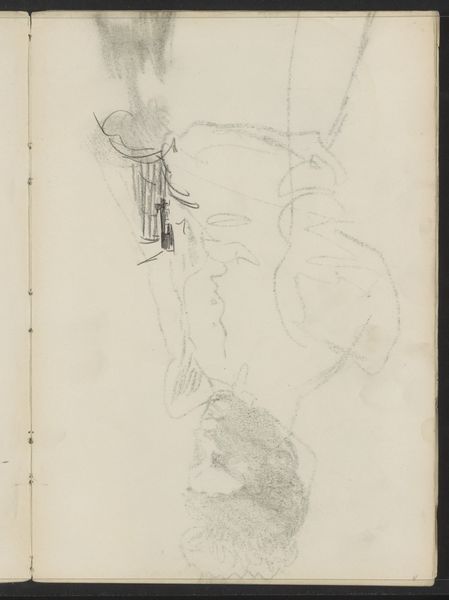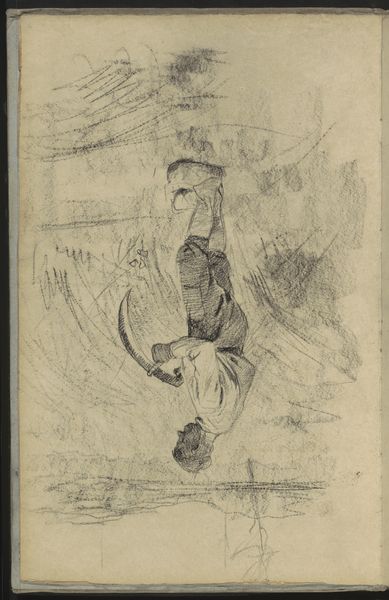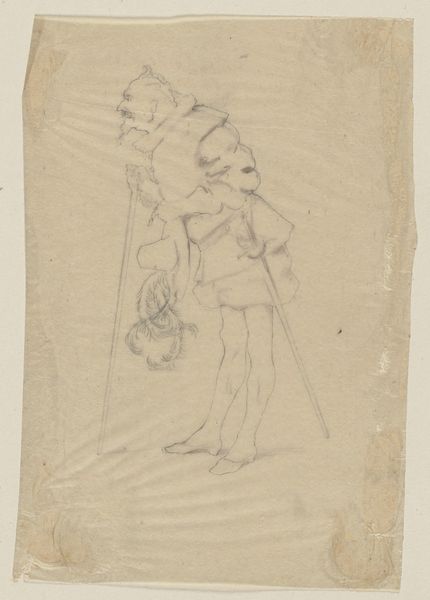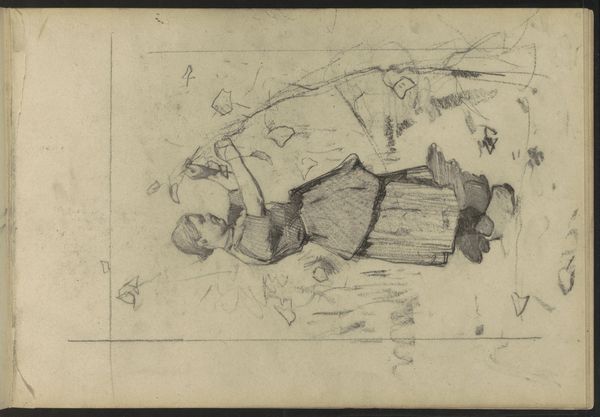
drawing, paper, graphite
#
portrait
#
drawing
#
impressionism
#
paper
#
graphite
#
realism
Copyright: Rijks Museum: Open Domain
Curator: Here we have George Hendrik Breitner’s "Figuurstudies," made between 1880 and 1882, a graphite drawing on paper. Editor: It strikes me as incredibly intimate, almost like we're peeking into the artist’s sketchbook. The figures, rendered so spontaneously, convey an immediate sense of life and motion. Curator: Indeed, Breitner's sketch offers a glimpse into his working process. Look at the layering of lines, the way he suggests form through subtle gradations of graphite. It's less about precise representation and more about capturing the essence of the figures. Editor: And isn't that so telling of the period? Realism and Impressionism moving away from academic rigor to embrace subjective experience, and Breitner found a middle ground between those two artistic approaches. You almost feel the urban hustle implied in the fleeting, quickly drawn poses. Did Breitner have an eye to capture the social realities of his time? Curator: Absolutely, Breitner was keenly interested in portraying the lives of ordinary people. While stylistically rooted in Impressionism with his quick, broken lines, he infused his work with a realist sensibility, documenting the changing social landscape. Note also the structural repetition of these figures creates a spatial relation. Editor: It's interesting how this lack of polish invites a different mode of reception. Rather than admiring a finished object, we become active participants, completing the image in our own minds. Breitner also worked during the emergence of photography. It is not absurd to think he felt free from rendering lifelike copies and pursued impressions that were left out of photographies from that time. Curator: Precisely! This work destabilizes notions of artistic authority, highlighting instead the potential for multiple interpretations and subjective engagement, thereby emphasizing his stylistic agency to be situated on both worlds, photographies and impressions. Editor: I've never considered sketch work so reflective. It makes me wonder about the function and position of this work when shown outside the studio's intimate circles. Curator: Agreed. Perhaps what appears incomplete actually encapsulates something far richer. It gives us not just a picture of figures, but insight into a fleeting moment and also into artistic construction. Editor: Ultimately, this work becomes an index, no longer just a drawing of a subject. Thanks for that, It opens new insights when viewing "Figuurstudies."
Comments
No comments
Be the first to comment and join the conversation on the ultimate creative platform.
